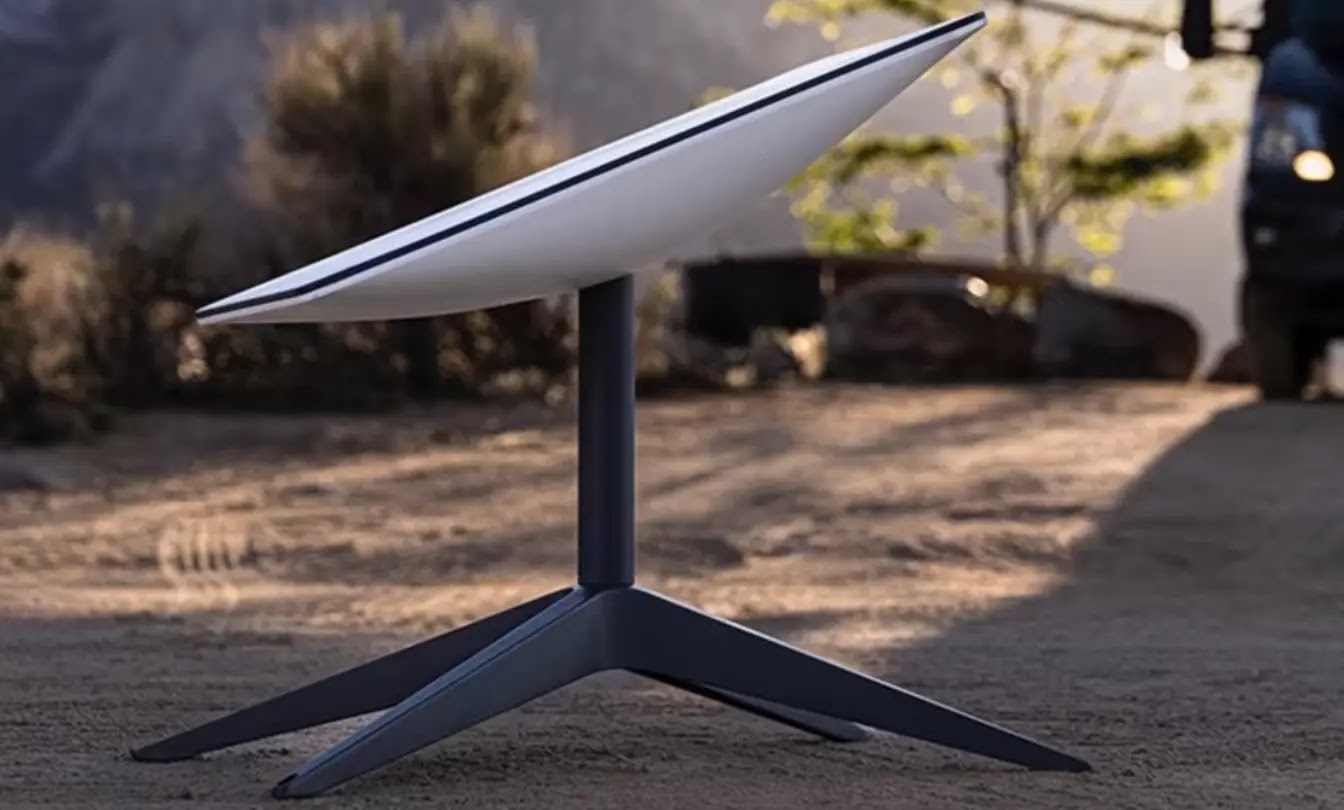This article explains the Starlink network project, how it works and differs from other satellite internet services, and debunks some common myths.
How does the Starlink network work?
Starlink is a huge project launched by the American company SpaceX, which was founded by the famous businessman Elon Musk. This project aims to create a network of thousands of satellites that provide high-speed Internet access from anywhere on Earth.
The project began in 2015, and since then thousands of small satellites have been launched into low Earth orbit, and the ultimate goal is to deploy about 42,000 satellites.
SpaceX wants this project to revolutionize the Internet by providing a fast, reliable, and affordable alternative to terrestrial cable Internet services, especially in rural and remote areas. Where it is very expensive or not possible to connect terrestrial internet cables to it.
Despite the ambitious and innovative nature of the project, there are many misconceptions and myths that have spread and circulated online and in some media. Most of them are based on inaccurate information. Here are some of the most common myths about the Starlink project and what they are all about.
1. Starlink is the first satellite internet service
One of the most prevalent myths about Starlink is that it will be the world's first satellite internet service. This is not true, as there are dozens of companies that have been providing satellite internet services for years. These companies use satellites that revolve around the Earth at a fixed location at an altitude of approximately 35,000 km and cover large areas of the Earth’s surface, but they have some disadvantages such as high access time. , that is, the time it takes for data to travel between the user and the satellite, low bandwidth, that is, the amount of data that can be sent per second, and high cost, that is, the cost of subscription and reception equipment, and its effect on weather.
Starlink differs from other satellite internet services, as it uses satellites located in low Earth orbit at an altitude of no more than 550 km. This significantly reduces latency from 600ms to about 25ms.
So, while Starlink is not the world's first satellite internet service, it is certainly one of the most advanced.
2. Starlink will provide free internet for everyone
Another common myth about Starlink is that it will provide free internet to everyone on Earth. This is also incorrect. Although Starlink's primary mission is to provide easy and affordable access to the Internet for everyone, it is a commercial project that seeks to generate revenue and profits. Using Starlink Internet will require a monthly or annual subscription fee, in addition to the cost of the equipment needed for satellite communication.
The current price for the service subscription is 110$ per month for unlimited data and high-speed internet, and this price may vary by region. The price of the receiver equipment is a one-time $599 purchase, which includes a receiver dish, dish stand, router, power supply, and cables. Equipment prices do not include shipping costs or taxes, which can add up to $100 depending on the location.
3. Connecting to the Starlink network does not require any equipment
Many believe that it is possible to connect to the Starlink network without any equipment. this is not true. All satellite internet services require a device that can connect to satellites and receive their signals. The Starlink communication equipment is a receiver dish with a diameter of about 0.5 meters and weighs about 5 kilograms. The antenna contains a built-in motor that allows it to automatically adjust its direction to stay connected to the satellite, in addition to a built-in heater that prevents snow build-up in cold places.
The dish is connected to a router to create a wireless network to connect users' devices, such as computers, smartphones, and tablets, and the router and dish are connected to a power supply unit that provides electricity.
4. Starlink Internet is as stable as terrestrial cable Internet
Starlink says that it will provide a constant and stable Internet connection, such as the Internet via a terrestrial cable. This is partly true, but not entirely. The stability of satellite Internet depends on several factors, such as the number and location of satellites, weather and atmospheric conditions, and service demand and usage.
The Starlink network will perform better than other satellite internet networks thanks to a large number of satellites, but some users may experience short interruptions or slowdowns in the network when the satellites move away from their location or when they switch from one satellite to another.
Starlink's performance will also be affected by weather and conditions, such as clouds, rain, snow, fog, dust, and smoke. These factors can dampen or prevent signals from being received.
Starlink's performance will also depend on demand and use of the service by customers and partners. Satellites have limited capacity and bandwidth that must be allocated and distributed among customers. The company says it uses dynamic allocation algorithms to adjust the band according to demand and traffic. However, in some cases the bandwidth may be exceeded, causing the Internet to slow or freeze.
So, while Starlink's performance will be impressive and unprecedented for a satellite internet service, it will not be as stable and stable as terrestrial cable internet.



Post a Comment